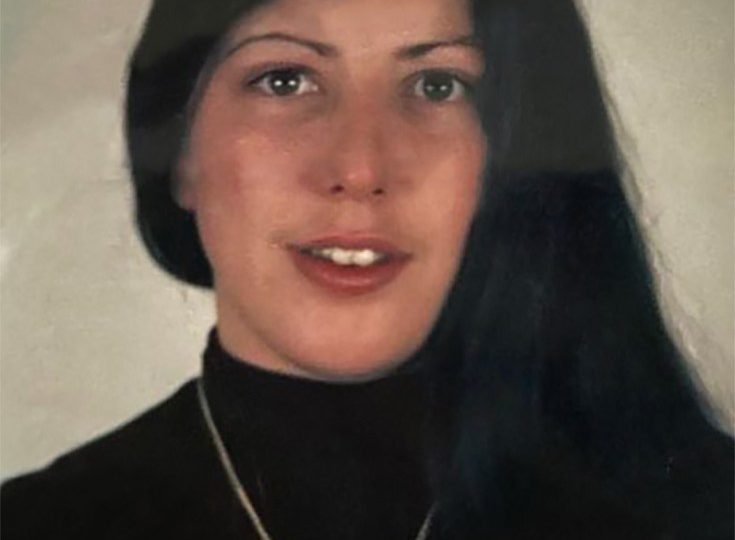THE family of Rita Roberts, who was incredibly identified by a tattoo decades after her death, have revealed their worst fears over what happened to her.
One of 22 women murdered across Europe under mysterious circumstances, cops this year published information about them that led to her identification just weeks ago.
AFPRita Roberts, 31, was violently killed in Antwerp in 1992[/caption]
InterpolThe tattoo, made up of a dark rose with ‘R’Nick’ written underneath, was spotted by a relative[/caption]
GettyHer family feared she was killed in an Amsterdam plane crash in 1992[/caption]
The unprecedented Operation Identify Me involved information and pictures from cases – usually only shared with police – published online.
In the hopes that members of the public would spot something they recognised, Rita’s sister Donna , 61, did with her distinctive flower tattoo.
The British expat, 31, had been found on June 3 1992 in a river in Antwerp. She had been violently killed.
Upon seeing the picture of her tattoo, Donna insisted it was her older sister Rita, and the family were finally able to fly out to Belgium and identify her following an “agonising” search.
But for more than 30 years, the troubled young woman from Cardiff was nowhere to be found and her loved ones feared the worst.
They even worried she had been killed in a 1992 Dutch plane crash, when a Boeing 747 smashed into a block of flats in Amsterdam and killed 43 people.
She had last contacted them with a postcard in May the year she died, and then not again – leaving them wondering what had happened to her.
The 31-year-old had been stabbed multiple times, suffering injuries to her back and neck, and left in a river in Antwerp where she was later discovered.
Rita’s younger brother Jason, 54, told the Mail they had hoped she was happy, carving out a new life for herself abroad before the crash.
But when the El Al jumbo jet hit an 11-storey block of flats in Bijlmermeer, Amsterdam, in October – they thought she could’ve been among those killed.
“We thought she was in Belgium, Holland or Germany and we hoped she was building a new life for herself,” Jason said.
“Then that plane went into a tower block killing so many people . . . there were unidentified bodies: we thought one of them could have been Rita.”
The heartbroken family also revealed that Rita, who had been in and out of court in her younger years, was on the run when she fled to Antwerp in February 1992.
She had appeared in court multiple times from the age of 22 and the last time was the year before she died, when she was accused of setting fire to a home with intent to endanger seven people.
Jason said this was the result of a local feud between two families and Rita, drunk, had thrown a firework through an open window.
He added that the case dropped, but another warrant was issued for Rita’s arrest later on as the vendetta continued.
And at one point facing a charge of theft and blackmail, her defence lawyer said to the court: “She has been involved from an early age in prostitution, drink and drugs, and it was, perhaps inevitable that she should end up involved in a serious case.”
In 1992, Rita fled Grangetown where she had lived with her single mother and three siblings, father, extended family and half-siblings for Belgium using Donna’s passport.
She had lived there, and in Amsterdam, in her 20s and Jason told the mail she had been forced into a period of prostitution during her last stint in Antwerp.
“She was put to work on the game but managed to get a message to us in Cardiff,” he said.
“Our brother, Tony, went over to bring her back. She was in a terrible state, half starved. It took three months to feed her up before she started recovering.”
In the years that Rita was missing, Jason had flown out to Holland and Belgium twice to look for her – and went to police.
But they didn’t offer any help and he said, heartbreakingly, that he was “stonewalled all the way”.
“All they did was refer me to the Salvation Army and to the police back in the UK.”
He said after her family in Cardiff received a postcard from her in May 1992, but nothing after, they “knew” she was dead.
“My mum knew we had lost her. It was never spoken about, but I could see it in her eyes.”
An unnamed relative said: “We always feared the worst when she didn’t send a birthday card to her mother and then there were no Christmas cards.
“Family was everything to Rita. She was a lovely girl who would do anything for anyone.”
Now the family, who described the news as “shocking and heartbreaking”, know what really happened.
“It was the tattoo that identified her,” Jason said.
“As far as I know, there has never been any DNA testing done. I remember Rita having a tattoo — it was quite crudely drawn. But my sister, Donna, remembered the rose tattoo; she was adamant about it, so we knew it was Rita.”
Jason now fondly remembers his older sister as a “female Peter Pan, full of life and laughter”.
He described the large family as close-knit, as they mourn the loss of Rita.
His half-sister Joanne Bryan said: “Rita and I were half- sisters, but we were very close.”
“I always thought of her as my sister. She was the best — she was a nice girl, a good girl. And very pretty.”
Her mother, Eirlys, died nine years after Rita, aged 68, never knowing what happened to her daughter, as did her father Joseph.
And the large family was grieving the loss of Rita’s half-sister Caroline who died in June this year from cancer – just after Operation Identify Me was launched.
The 31-year-old was one of 22 women thought to have been murdered all across Europe under mysterious circumstances going back 50 years.
And cops in the Netherlands, Germany and Belgium were left baffled before they came together in a bid to identify the women.
Interpol decided to go public with information this year about the unidentified bodies in an unprecedented move, in cooperation with national police.
Details about the women, including photographs and even some facial reconstruction was released, including a photograph of Rita’s tattoo.
Cops are still desperate to identify 21 others who were brutally killed and to find out the circumstances of Rita’s brutal murder.
Dr Susan Hitchin, Coordinator of Interpol’s DNA unit, told The Sun that there is “always the possibility of human trafficking” as a connection of sorts between the victims.
“This is also why these countries came to Interpol,” she said.
“If we can identify these women that can hopefully lead to potential investigative leads on how they were killed.”
The DNA expert described the open-ended investigation as “heartbreaking” and an “emotional roller coaster” as investigators come across potential leads that don’t lead to something.
But she said the fact that Rita was identified only months after the operation was launched in May gives them hope that other women might be too.
Leave a comment
















